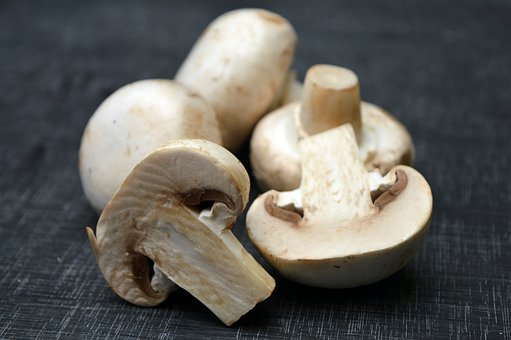Story
Gold
Introduction of Mushroom Supplements
Mushroom supplements are a great means to boost total health as well as wellness. But who should take them? Normally talking, any type of healthy adult can gain from taking mushroom supplements. Nonetheless, specific problems may suggest that it is best for some individuals to speak to their doctor prior to starting a supplement program.
Mushroom supplements supply a vast array of health and wellness benefits. People with body immune system deficiencies, people that are prone to allergic reactions or sensitivity reactions, as well as those with digestion problems all stand to benefit from supplementing with mushrooms. Furthermore, mushroom supplements may assist support healthy hormonal agent balance and normal cholesterol degrees.
Mark Wahlberg the fighter for working today
Who Must Take Mushroom Supplements
Generally, mushroom supplements are risk-free and suitable for most people. Individuals who have a health and wellness concern problem or take medications must constantly talk to their healthcare provider before taking any type of new supplement. Furthermore, pregnant ladies and also youngsters ought to always consult a doctor initially prior to using mushroom supplements.
Advantages of Taking Mushroom Supplements
Mushroom supplements are recognized for their vast array of health benefits. Research studies have actually revealed that taking mushroom supplements may aid to support a healthy and balanced immune system, boost food digestion and supply natural remedy for allergies and also sensitivities. Furthermore, mushroom supplements might help to sustain normal cholesterol degrees and hormone balance.
If you are seeking for all-natural methods to enhance your wellness and wellbeing, then mushroom supplements may be the right option for you. Talk to your healthcare provider to identify if they are right for you.
Mushroom supplements can offer a variety of wellness advantages to the majority of healthy and balanced grownups. However, those with status quo or that take medications should always speak to their healthcare provider before starting a supplement routine. Furthermore, pregnant women and youngsters must always seek advice from a medical professional before taking any kind of supplements.
Speak with your healthcare provider to identify if they are right for you. With their variety of health advantages, mushroom supplements may be the excellent option for enhancing total wellness and also wellbeing.
Possible Negative Effects and Risks of Taking Mushroom Supplements
While mushroom supplements are generally risk-free and also ideal for most people, there are some potential adverse effects and dangers to consider. Somebody that have a hidden health and wellness problem or take drugs should always talk to their doctor before taking any new supplement. In addition, pregnant females and children must always contact a medical professional initially prior to making use of mushroom supplements.
Although unusual, mushroom supplements might create an allergy in some individuals. If you observed any of the following signs after taking a mushroom supplement, quit taking it instantly and seek medical interest: hives, difficulty breathing, chest rigidity, or swelling of the lips, face, tongue or throat.
Exactly how to Select the Right Sort Of Supplement for You
Selecting the ideal sort of mushroom supplement can be tough. When choosing a supplement, search for one that is made with organic and also sustainably-sourced mushrooms. Furthermore, make certain to check out all component identifies carefully and stay clear of any kind of supplements that contain included fabricated ingredients or preservatives.
If you are still unclear which kind of mushroom supplement is right for you, talk with your healthcare provider. They can help lead you in selecting a supplement that is finest suited to your requirements and way of living.
Mushroom supplements might be a fantastic way to support healthy hormonal agent equilibrium and normal cholesterol levels. That should take mushroom supplements? In general, mushroom supplements are secure and also appropriate for many people, nonetheless, those with existing conditions or who take medicines need to constantly talk to their doctor prior to beginning a supplement program.
In addition, expecting women and also youngsters should constantly check with a doctor first prior to using mushroom supplements. If you desire for natural ways to boost your health and well-being, after that mushroom supplements may be the appropriate choice for you. Speak with your doctor to determine if they are right for you. With their large range of health and wellness benefits, mushroom supplements might be the ideal selection for enhancing total health and wellness and also wellness.
Dosage Recommendations for Different Sorts Of Mushrooms
The suggested dosage of mushroom supplements differs depending upon the type and resource of mushrooms used. It is essential to read the item tag on your supplement very carefully, as it will certainly provide specific instructions for safe as well as effective usage. If you are still unsure about which dosage is right for you, consult with your doctor for tailored recommendations.
As a whole, it is best to start with a lower dose and afterwards increase it gradually over the course of numerous weeks. This can aid you establish exactly how your body reacts to the supplement, along with identify any prospective side effects.
Tips on Incorporating Mushrooms right into Your Diet Regimen and Lifestyle
In addition to taking mushroom supplements, you can additionally add mushrooms into your diet and way of living. Fresh mushrooms are a tasty enhancement to any type of meal and are packed with antioxidants, vitamins, and also minerals that might improve overall health and wellness. There are a lots of different types of edible mushrooms available at grocery stores or farmer’s markets.
You can likewise incorporate mushrooms right into your way of living in other methods. As an example, certain sorts of mushrooms can be utilized as a natural dye for fabrics or perhaps as a therapy for digestive system concerns. If you are seeking more ways to incorporate mushrooms into your diet plan as well as way of living, speak with your doctor for tailored guidance and suggestions.
